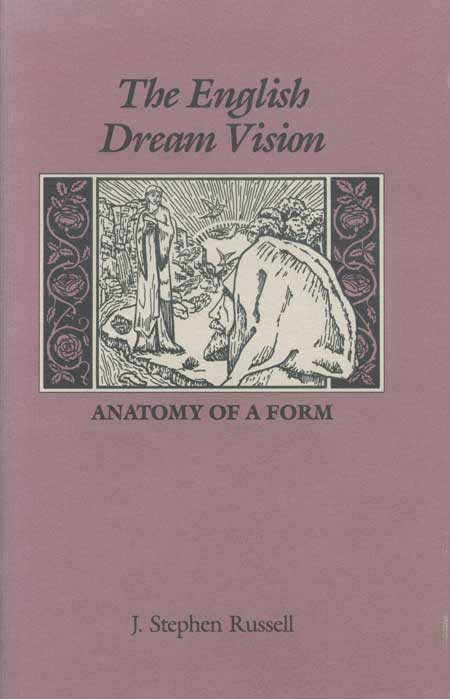| click here to read the full text of the book | leave / read comments and critiques of the book |

The English Dream Vision
Anatomy of a Form
J. Stephen Russell
The first-person dream-frame narrative served as the most popular English poetic form in the later Middle Ages. In The English Dream Vision, Stephen Russell contends that the poetic dreams of Chaucer, Langland, the Pearl poet, and others employ not simply a common external form but one that contains an internal, intrinsic dynamic or strategy as well. He finds the roots of this disquieting poetic form in the skepticism and nominalism of Augustine, Macrobius, Guillaume de Lorris, Ockham, and Guillaume de Conches, demonstrating the interdependence of art, philosophy, and science in the Middle Ages.
Russell examines the dream vision’s literary contexts (dreams and visions in other narratives) and its ties to medieval science in a review of medieval teachings and beliefs about dreaming that provides a valuable survey of background and source material. He shows that Chaucer and the other dream-poets, by using the form to call all experience into question rather than simply as an authenticating device suggesting divine revelation, were able to exploit contemporary uncertainties about dreams to create tense works of art.
The English Dream Vision contains fresh, integrated readings of several important fourteenth-century poems, including Chaucer’s Book of the Duchess and Hous of Fame and the anonymous Pearl. It also provides ground-breaking application of contemporary critical theory to medieval literature, thus introducing new tools to medieval studies and new texts to critical theory.
J. Stephen Russell is Assistant Professor of English at Hofstra University. He is the author of Writing at Work: The Russell and Associates Papers and Allegoresis: The Craft of Allegory in Medieval Literature.
| 1988 244 pp. | This title is no longer available in a traditional print edition. Click here for free access to the book's full text. |

